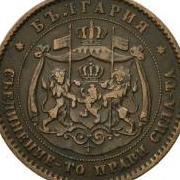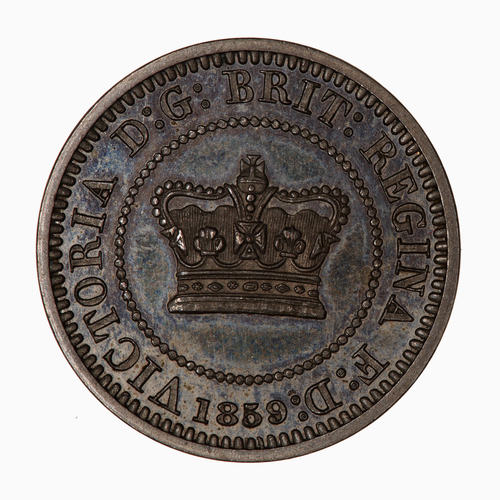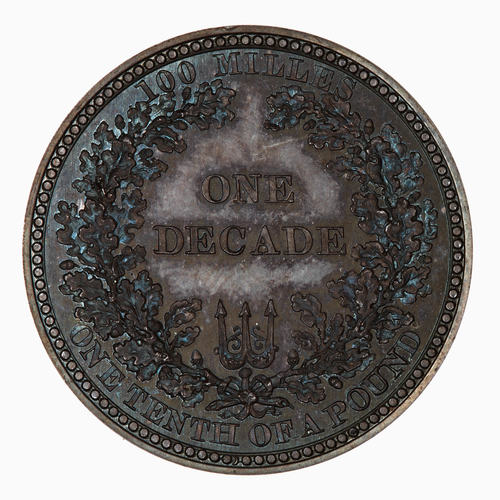-
Posts
42 -
Joined
-
Last visited
-
Days Won
1
Content Type
Profiles
Forums
Events
Downloads
Store
Gallery
Articles
Everything posted by Pavel
-

How does the legend read?
Pavel replied to Pavel's topic in British Coin Related Discussions & Enquiries
Thanks Rob. -
Bit of a stupid question but... Looking at a pre-decimal coin of Queen Elizabeth II with a legend in Latin, it says: a) ELIZABETH · II · DEI · GRATIA · REGINA · F : D : + or b) + ELIZABETH · II · DEI · GRATIA · REGINA · F : D : Example: https://onlinecoin.club/Coins/Country/United_Kingdom/Halfpenny_1955/ In other words, is the cross the first or the last symbol? Does anyone know if it has any special meaning? It was suggested in another forum that it's basically a remnant from the olden times, when legends were not too legible and it was used as a sort of hint as to where to start reading; in other words, it should be the first symbol (case b above).
-
Good day all. I am now editing the UK / decimal part of my coin reference site and have reached the 2000 Public Libraries 50p; it's listed as having been designed by Mary Milner Dickens (that's what the Royal Mint site says). But, there seems to be a signature between the two right-most columns which is nothing like her signature on the EU 50p? Would any of you have some insight on this?
-

What's Your Job in Real Life?
Pavel replied to Madness's topic in Nothing whatsoever to do with coins area!
Web programmer... -
Would token issuers use the King's effigy? I thought that, and the legend, amounts to a claim it's official money and they avoided such claims? The portrait looks like (but is not) that by Pistrucci: http://onlinecoin.club/Info/Effigies/King_George_IV_by_Benedetto_Pistrucci/ And again is similar to, but not exactly the one on Irish pennies: http://www.irishcoinage.com/J00059.HTM Very confusing...
-
It doesn't advertise anything, so play money is the best guess so far. But why so massive? Also, can you judge by the quality of the effigy? I mean, does it look like Royal Mint output, or a private company issue? Or would there be no difference in quality at that time?
-
Can somebody please tell me what I have acquired here? It was in a heap of 17th to 19th century copper English and Irish coins and tokens I bought recently. It weighs about 20 grams. The legend and date on the obverse have a slight doubling. And, of course, the penny coins of this year looked nothing like this...
-
Probably old news for you experts here, but I just find it amazing to stumble upon such photos while browsing the site of an Australian museum... This pattern 1859 penny for example. And a pattern twopence. And a halfpenny. And a decade (equal to 100 milles). Just wow...
-

Seeking feedback for a coin reference site
Pavel replied to Pavel's topic in British Coin Related Discussions & Enquiries
For now, yes. There's enough there to keep me occupied for a long time... Eventually, I'll get to the hammered coins though. Personally, I find them very interesting but gave up on trying to learn about them after a brief passage in a book I was reading. It was written by Gregory of Tours who said, among other things, something to the effect of "we ran out of money so we then melted some gold plates and struck some coins". So, this small town bishop has his own backyard mint and strikes coinage with a mintage of "several plates worth of gold". Try and systematise that... -

Seeking feedback for a coin reference site
Pavel replied to Pavel's topic in British Coin Related Discussions & Enquiries
Yes, I definitely need lots of images (and not only of the bronze coinage - silver and gold too). I have been using the web site of Museums Victoria (Melbourne) - they have generously allowed republishing under a CC licence; but their collection has some strange gaps. They inherited the archive of the Melbourne branch of the Royal Mint which got lots of specimens sent to it, so if you search their collections you can find amazing stuff (like some 1840s patterns). And then, they either lack some very common coins, or they have an example which they purchased - in terrible grade :-( -

Seeking feedback for a coin reference site
Pavel replied to Pavel's topic in British Coin Related Discussions & Enquiries
To be honest with you, I was hoping to find some middle ground between "general collector" and "expert" material - i.e. something that would give the general collector enough to do a quick lookup, but also enough for the expert to go on. Obviously, a site cannot be an authoritative source for anything, but can at least provide pointers to sources. Well, I never thought it's going to be easy... About varieties - yes, they will have to be searchable and order-able somehow, but I have yet to figure out how to do that. Searching within texts is easy, but how do you translate what a "variety" is into searchable text? Not trivial... -

Seeking feedback for a coin reference site
Pavel replied to Pavel's topic in British Coin Related Discussions & Enquiries
Yes Rob, there is an awful lot of food for thought. Being a programmer, I started with the "get the low-hanging fruit first" approach - that is, list by most popular references, then add other references, then (if needed) solve whatever issue arises further. Having Spink and Krause references added, I guess everyone will find what they need... Varieties that are not listed anywhere are currently a problem for me. One, I have no literature from which I can get them. Two, it's very slow going even without them. I guess I'll have to address that later, when I am done with the "standard" entries. Re identification system. There can be two general approaches. First, the one you describe - where the "reference" describes the coin. Now, you will need to "encode" in this an awful lot of variables - country, denomination, monarch, year, mint, die variety, edge, composition, even thickness (think "piedfort"). You will end up with one pretty long and unreadable string of letters or, if you do not abbreviate too much, with a literal description of the coin which will defeat the purpose. Not to mention that some of these elements may be up for debate. Why are British coins listed under "Great Britain" in Krause and not "United Kingdom"? Why are Australian sovereigns under Australia and not New South Wales and South Australia - where they were actually issued? Who was the "monarch" in Fiji in 2009 when they had Queen Elizabeth II on the obverse of the coinage, but had been a republic since 1987? In short, this leads us to the second approach - just forget about a descriptive ID... Most of them are meaningless anyway. Whether it's 3856 in Spink or KM # something in Krause - it tells you nothing by itself, you need the "book" (or online source) to look it up. Well, if you are looking it up anyway - why not just assign a random mix of letters? This does not imply any ordering, and (from a technical point of view) "encodes" much better (you can number more things in the same space using letters and numbers as opposed to just numbers). -

Seeking feedback for a coin reference site
Pavel replied to Pavel's topic in British Coin Related Discussions & Enquiries
Thanks Rob. This being a web site, it is inherently unlimited so yes - it will become unwieldy but it can still incorporate as much data as you put into it... and inserting a new discovery is not a problem. Have a look at, say, the 1860 penny with all varieties as per Freeman - if a new one is found, I'll just add a new reference and one additional row in the database. (it is a web site only, no book is planned) As for sovereigns - I have the basics in order. What I mean by "untangle" is this. The 1880 sovereign is listed in many catalogues and each one has a number of IDs (one per variety). So, is "Normal IEB (Melbourne Mint)" (McD 177a) the same as Spink 3867A? They are described differently and (for me at least) it's not easy to decide which variety in one of the books matches which one in the other. Numbering system... I have thought about this, but the usual system (sequential) is 1) invented already, and 2) does have the issue with inserting new discoveries you describe. So, for a web site (where people will copy/paste IDs from somewhere) maybe you do not need a logical sequence? XYZ3-HHFD-OO7T will do nicely too? Guaranteed to be unique, and you can generate any number of them so each variety will have its own ID. -
Good day everyone. As you can see from my profile, I am new here. First, I must say that I am not an expert in numismatics, and am not a great collector as such (more of a "hoarder" type). But, I am a web programmer so I decided to combine hobby with profession, and build a web site. Yes, I know about Numista but there are many things I don't like there. So... I have been working on this: http://onlinecoin.club/ The main idea being - it should be general reference site which allows "deep research" - not just a list of coins but also cross-referencing (who was the monarch who issued that coin / what else was issued during that reign; which mint struck this coin / what else did that mint issue etc.), plus proper attribution - which fact came from which source. As part of that, I am building a database of all people that might appear on coinage. And... here's where it became messy. For example, this is a list of effigies: http://onlinecoin.club/Info/Effigies/ (in the future, ideally I want a full list there of every monarch ever depicted on a coin). But... catalogues and most books are usually vague on who designed what, which effigy is displayed on a particular coin etc. For example, look at the post-1801 coinage of King George III: http://onlinecoin.club/Info/Reigns/United_Kingdom/King_George_III/ - was it really that messy, so many different portraits used at the same time? Can somebody spare some time and give me some feedback on what I have done so far? The site is still under construction. British coinage is here: http://onlinecoin.club/Coins/Country/United_Kingdom/ (scroll down for pre-decimal). I am still working on the copper/bronze coinage so not everything is there yet. ps I don't even want to go into the topic of sovereigns and half sovereigns, and how to untangle the post-1880 varieties which seem to be listed differently in British and in Australian catalogues (if anyone can tell me which Spink listing matches which McDonald number, I'll be eternally grateful...)





